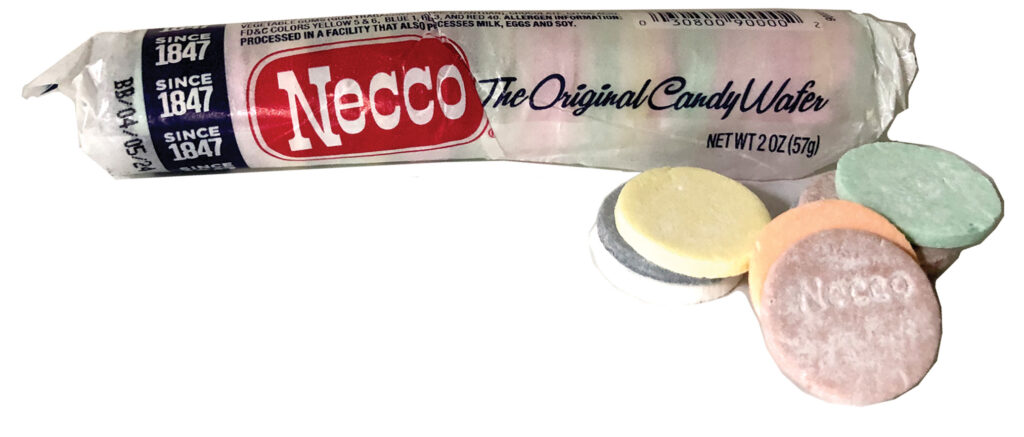
Dorri Partain
Contributor
In 1847, Americans did not have the vast array of chocolate-covered, nut-centered, colorful candies we enjoy today.
Now labeled as “the original candy wafer,” these simple pastel colored disks led to the industrialized candy industry. Oliver R. Chase (1821-1902) was a young Englishman working in a Boston pharmacy, making lozenges by hand. The process involved rolling out a pasty, sugar dough then cutting each circle one by one.
To speed up the process he invented a machine, similar to today’s pasta machine, that would cut dozens of lozenges at the turn of a crank. Along with his brother Daniel, Chase left the pharmacy and started his own candy company. In turn, Daniel improved and patented Oliver’s “lozenge cutter” in 1857 and then later developed the process to print on candies – the first conversation hearts.
In 1901, the brothers acquired two other candy companies and renamed the merged companies the New England Confectionery Co. The abbreviation “Necco” became the new name for the candy wafers, which feature the flavors lemon (yellow), clove (purple), cinnamon (white), licorice (gray), lime (green), wintergreen (pink), chocolate (brown) and orange.
Due to their chalky texture, the wafers taste best when dissolved slowly instead of chewing. Wrapped in a wax paper roll, the candies are known for an extended shelf life; when Admiral Richard Byrd was packing supplies for his polar expedition in 1930, he included 2.5 tons of Necco Wafers, enough for each team member to consume a pound a week for two years.
The U.S. Army also included Necco Wafers to supplement soldier’s rations during both world wars.
When NECCO closed its factory in 2018, the Spangler Candy Company purchased the rights to Necco Wafers and returned the candy to production in 2020. For his contribution to the industrialization of candy production, Oliver Chase was inducted into the Candy Hall of Fame in 2006.
















